We are no longer building saddle trees, but we have two videos about how Western saddles fit horses available on our westernsaddlefit.com website.
The handiest "tool" in the shop
Posted by RodandDenise on February 18, 2012
We are no longer building saddle trees, but we have two videos about how Western saddles fit horses available on our westernsaddlefit.com website.
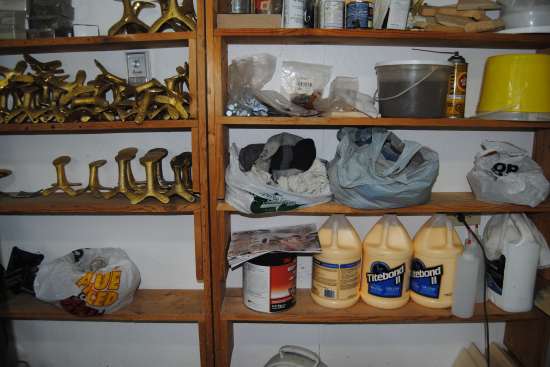
is in the plastic bag in the center of this picture. That’s right – dead socks… I wandered around today and took some pictures of all the places we use them.
A stood up Wade fork
Posted by RodandDenise on February 17, 2012
We are no longer building saddle trees, but we have two videos about how Western saddles fit horses available on our westernsaddlefit.com website.
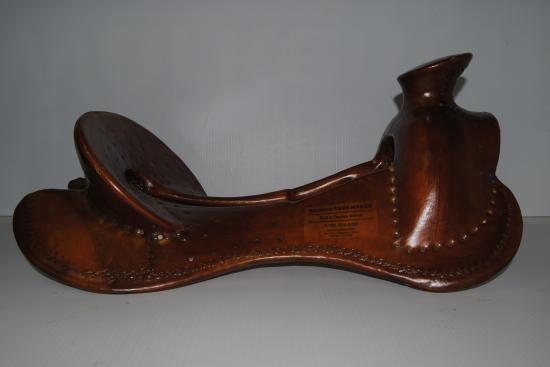
We shipped this one out a little bit ago. This is a normal Wade fork but rather than being at the normal leaned ahead angle, it is stood up. We have built some of these over the years, mostly for two particular customers who prefer this look to their Wades, but a few for other people.
The cervical (neck) vertebrae and how they move
Posted by RodandDenise on February 15, 2012
We are no longer building saddle trees, but we have two videos about how Western saddles fit horses available on our westernsaddlefit.com website.
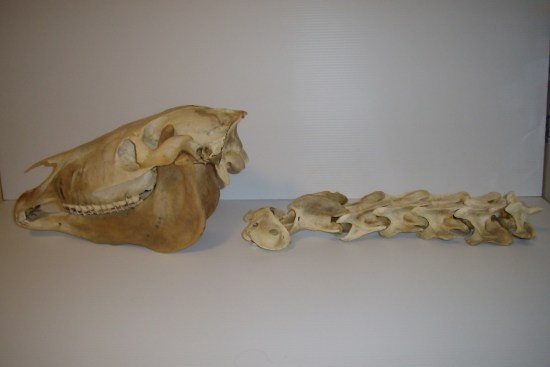
The cervical (neck) vertebrae is the first section of the spine I will write about. It has the most variation in form within it. There are two very unique vertebrae that allow the head to have the range of motion it does. There is also a lot more movement between the individual cervical vertebrae than any other section of the spine, allowing a lot more movement in the neck overall than any other part of the spine. This is pretty obvious. And while we don’t ride the neck of the horse, because the spine is one unit – bones, ligaments and muscles all connected as they run down from head to tail – how the neck works does affect the rest of the back. And it all starts at the head...
Side Saddle Trees
Posted by RodandDenise on February 13, 2012
We are no longer building saddle trees, but we have two videos about how Western saddles fit horses available on our westernsaddlefit.com website.
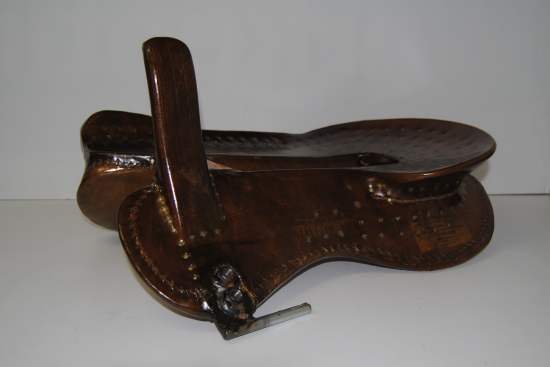
We shipped out another side saddle tree a few weeks back. We have been building side saddle trees since the summer of 2009 and this is the tenth one we have built to date. The bottom of a side saddle is the same as a regular saddle in terms of fit, so that hasn’t changed. But learning how the top of a side saddle is supposed to function and then building something that will work well has been quite the education – and we are still learning. We also had to completely refigure how attach the parts of the tree together and keep the same correct relationship between the bars because these are built completely different than “normal” Western saddle trees. One thing we have found is that there is no such thing as a “standard side saddle”. The designs have evolved and changed a lot over the years and vary depending on where the saddle was made. In fact, it is pretty tough to find side saddles that are the same until you get to the age of production made saddles. They really do tend to be individualistic saddles!
One of these things is not like the other...
Posted by RodandDenise on February 12, 2012
We are no longer building saddle trees, but we have two videos about how Western saddles fit horses available on our westernsaddlefit.com website.
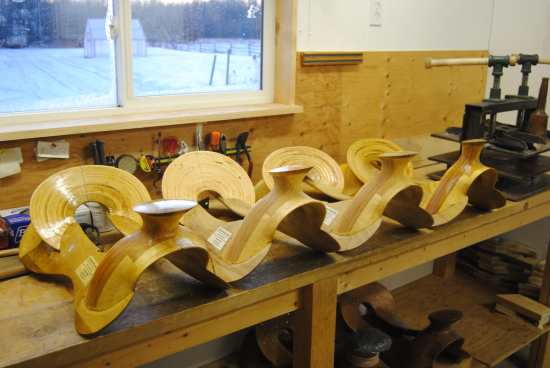 OK. So they are all different, but the biggest difference is the horn cap size, and that is what the song is referring to. (By the way, do they still do that song on Sesame Street? Is there still a Sesame Street?) This is the line up Rod faced this morning. He got the end two rawhided today. The middle two got two more coats of varnish each and will be rawhided Monday. Sunday is a day off and a day to worship God, which is far more important than rawhiding trees...
OK. So they are all different, but the biggest difference is the horn cap size, and that is what the song is referring to. (By the way, do they still do that song on Sesame Street? Is there still a Sesame Street?) This is the line up Rod faced this morning. He got the end two rawhided today. The middle two got two more coats of varnish each and will be rawhided Monday. Sunday is a day off and a day to worship God, which is far more important than rawhiding trees...
And the vertebra is connected to the...
Posted by RodandDenise on February 10, 2012
We are no longer building saddle trees, but we have two videos about how Western saddles fit horses available on our westernsaddlefit.com website.
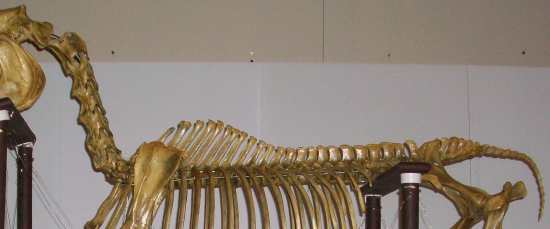
next vertebra. And the next vertebra is connected to the… next vertebra. (Sing it with me!!) Actually they are connected to all of the other vertebrae, because there are some pretty interesting ligaments holding the spinal column together. Time out for terminology here: Tendons attach muscle to bone. Ligaments connect bone to bone. Most ligaments are quite short because they are connecting two bones that are sitting side by side. While there are short ligaments that connect adjacent vertebrae together, there are three main, very long ones that run the whole length of the spine and which are very important in how the spine moves.
If you have it sitting in the shop…
Posted by RodandDenise on February 9, 2012
We are no longer building saddle trees, but we have two videos about how Western saddles fit horses available on our westernsaddlefit.com website.
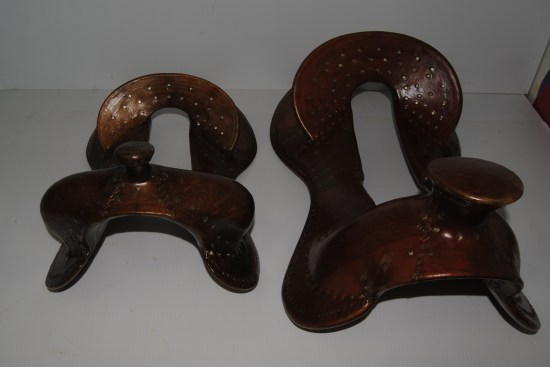
We shipped off the itty-bitty kiddie tree on Tuesday. Here is a picture of it and its partner finished. I’m really looking forward to pictures of the finished saddle. But while it was still here, we had a customer come to pick up a couple of trees we had ready for him. (The ones with the Taylor and regular cantles I talked about earlier.) Anyway, turns out he has an 18 month old grand-daughter. Yeah she’s small now but she’ll grow, and you know, she'll need a saddle to ride with Grandpa… Seeing that little tree sitting there inspired him and sure enough, we have an order for another one of these with some slight modifications.
Taylor versus regular cantles – see the difference
Posted by RodandDenise on February 7, 2012
We are no longer building saddle trees, but we have two videos about how Western saddles fit horses available on our westernsaddlefit.com website.
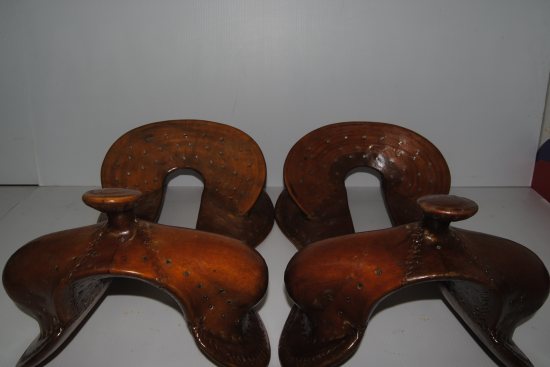
We recently built two trees that were almost identical. Forks, fit and seat length were all the same. The cantles had the same specs too for height and width and angle. But there was a crucial difference - the amount of dish. One tree had 1 ½” of dish. One had ¾” dish. And that difference changed the cantle from a “regular” to a “Taylor”, which affects the look of the cantle, the slope of the dish, the slope of the back of the cantle, the angle of the cantle cut on the bars, and even the bar length. All for ¾” of an inch of dish… Here are pictures of what I mean.
Today in the shop
Posted by RodandDenise on February 4, 2012
We are no longer building saddle trees, but we have two videos about how Western saddles fit horses available on our westernsaddlefit.com website.
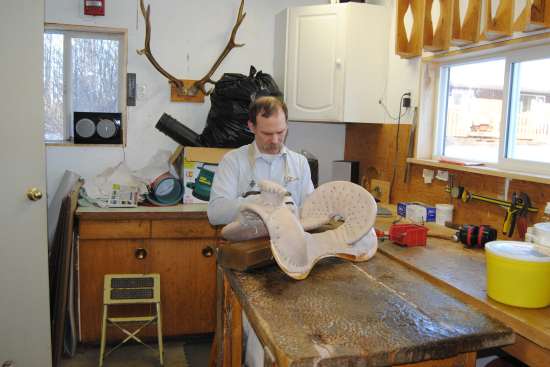
Today was just a normal day in the shop for us, and I thought I'd show you pictures of what all is happening in a normal type day. I know it is Saturday. We take Sunday off, but we pretty much always work in the shop the other six days of the week. Rod is out there by 8 am, takes an hour at lunch and quits at 6 pm, six days a week. So if you are wanting an easy job with short hours and lots of holidays, don't be a saddle tree maker...
How does pressure cause tissue damage?
Posted by RodandDenise on February 3, 2012
We are no longer building saddle trees, but we have two videos about how Western saddles fit horses available on our westernsaddlefit.com website.
We all know that too much pressure between a saddle and a horse can cause pain and damage to the horse. In a previous post I explained why we don’t really know how much pressure is too much. Another commonly asked question is “How does pressure cause damage anyway?” And the answer to that is the same: We don’t really know for sure. But there are a number of things going on that could be causing, or contributing to, the damage. And the number one culprit discussed is lack of oxygen (ischemia).
